Say No to Bread: Mould, Fungus and Toxins

Penny’s notes:
I personally don’t eat any bread, pasta or rice anymore due to the fact that I don’t see any reason it should now be on my plate. I can see myself still eating it at restaurants or other people’s houses or something if I was ever in that situation, but when cooking for myself, I instead choose “quinoa” to replace rice in some dishes or “raw cauliflower” in other dishes (like sushi), peeled vegetables to replace pasta, and I don’t really need a bread substitution anymore but if I do feel like a bread-like dish, I’ll instead eat chickpea roti’s (made from ‘chickpea flour’ & indian spices) or just plain wholemeal roti’s from the indian grocer, but I wouldn’t make any of them a “staple” back in my diet.
I agree with Hulda Clark below about the nuts containing mould and am consciously aware of it when consuming, but I still eat nuts in moderation, because I would rather get the nutrients from my food than buy an excessive amount of supplements, but I am open to changing if I see the need. Because of the little amount that I do use, and because my health is not affected (I don’t have reactions to the food that I’m currently eating), I don’t hear any alarm bells ringing from the small amounts that I eat.
- maybe I just got lucky with some good batches here in Australia, or
- maybe my immune-system is in working order again, or
- maybe I just don’t eat enough that it is noticeable on my system (who knows!) but it’s definitely worth being aware of what ‘could’ be making us sick
- hmm… I also consume vitamin c water daily which might be negating any ill effects too
- or maybe, it “IS” effecting me and I am not noticing it
I also consume Apple Cider Vinegar in moderation (a capful or 2) on a daily basis. Hulda Clark is not a fan of it because it produces Aflatoxin. I am a Hulda Clark follower in many ways, she was revolutionary in bringing so much information to us with her never-ending research and dedication, but there are some things that I do differently to what she has researched, based on benefits I feel that I am getting from certain things (kind of like those who take certain medications with unwanted side-effects, but the benefits outweigh the side-effects so you continue to take it… except for me, I’m not getting any unwanted side-effects). However her research has helped millions and there is much to be learnt from all her case studies and testing.
Today I’m answering a comment about bread/pasta alternatives for someone in a COPD group I’m in, and I wanted to post Hulda’s extracts from her book ‘The Cure for All Diseases’ which is mostly focused on moulds, fungus & toxins in relation to commercially-packaged bread because it demonstrates a reason ‘why’ it might be affecting our breathing and causing asthma / copd attacks & inflammation when consumed.
At the time of writing her book, maybe she thought that our cultures were too dependent upon bread & pasta to “give it up” completely.. I’m sure if she were still alive, she would probably recommend to remove it completely from diets rather than provide suggested alternatives. But that being said, I will post her research below without any amendments, even though I really believe that it doesn’t have any place in our diets anymore.. if a food doesn’t provide us with “cellular healing”, if a food doesn’t provide our cells nutrients that it needs to function, it shouldn’t be on our plates.
Bread & Pasta extracts from Dr Hulda Clark (The Cure for All Diseases book):
There are solvents in grocery store bread, grocery baked goods and cholesterol-reduced foods. Eat none of these. Buy baked goods and bread at your local bakery. The chlorine in water and bromine in bread may inhibit iodine uptake by the thyroid, too. Stop eating bleached bread and filter out the chlorine in your water.
Alternatives to Commercial Bread:
- Wheat-free bread
- Corn-free bread
- Rice bread
- Non-wheat raisin bread (from natural foods store)
- Bakery bread (Only buy fresh bread not wrapped in plastic)
- Bake your own bread! (I found aflatoxin in commercial Bread after just four days in my bread box, but none in homemade bread even after two weeks! Aflatoxin is a most potent carcinogen and immunosuppressant.)
- Limit bread eating to “after main dish” eating
Bread & Pasta Rules of Thumb:
- BREAD Yes, but only from a bakery, and never wrapped in plastic.
- TOAST No. Don’t eat toast (many toasters spit tungsten all over your bread and make benzopyrenes). Yes, if made on a cookie sheet or in a frying pan
- RICE Yes, if vitamin C is added before cooking. Use white only, brown is too moldy.
- PASTA Yes, with homemade sauce and vitamin C
Aflatoxin
A common mold found on bread, nuts and fruit and in beer, apple cider vinegar and syrups, produces aflatoxin. This is what prevents you from detoxifying tiny bits of propyl alcohol that get into your body.
Aflatoxin is a substance made by mold; bread starts to mold on the grocery store shelf. Don’t buy plastic-wrapped bread. Don’t ever salvage moldy food, whether it is fruit, breads or leftovers in the refrigerator. Throw them out. Buy a bread maker.Use unbleached (unbrominated) flour and add ½ tsp. vitamin C powder per loaf to help retard mold further (it also makes the bread rise higher).
Never eat moldy or grilled foods including popcorn, corn chips, grocery store breads, pasta, nuts, alcoholic beverages, toast, brown rice (white is OK).
Vitamin C helps your body detoxify all the mold toxins I have tested, including aflatoxin.
Calcium propionate
Calcium propionate is added to bread-stuff to inhibit molding. That’s fine. But then the bread is encased in plastic to hold in moisture and keep it “fresh”. The moisture acts to incubate mold spores and overwhelms the inhibitor. Vinegar is used instead of calcium propionate in some breads but, again, the plastic ruins its effectiveness.
Lime Water
Another good mold inhibitor is lime water. This is used in making tortillas. None of the old fashioned tortillas (made with just corn, water, lime) that I tested had any mold, even without propionate added! Other tortillas made of flour and calcium propionate frequently had molds.
Mold Spores
Bread is such a staple we must correct its mold problem immediately.
The two likely sources for the mold spores are:
- in the flour to begin with, or
- just flying about the bakery and landing on the newly baked loaves
Bread flour in the grocery store is quite free of mold spores, so maybe it is the bakery that needs to change. Perhaps it is not possible to bake 24 hours a day in the same building, year after year, without bits of flour and moisture accumulating in the millions of tiny cracks and crevices that all buildings have and germinating mold. Yet bread from small neighborhood bakeries does not have mold!
Rice and pastas can be demolded partly by cooking and partly by adding vitamin C before or after cooking. There is no need to add so much it affects the flavor. Brown rice is especially moldy.
Bread cannot be salvaged. Switch to bakery breads or homemade. Use it up in a few days, left in its paper bag. Or slice and place in a plastic bag in the freezer.
All U.S. brands of pasta I tested had mold, including health food brands. Make your own pasta with a pasta maker. U.S. bread flour is quite free of mold; the mold in our pastas must come from using inferior quality flour. Always add vitamin C to pasta before or after cooking.
Cytochalasin B
Cytochalasin B (“cyto B”) is another immune lowering fungus. I find it mostly in pasta. It stops cells from dividing. Dead portions of the liver cannot regenerate as they otherwise would after a toxic encounter!
Phosphate
Phosphate deposits are a mixture of three phosphates: monocalcium phosphate (CaH2 PO4), dicalcium phosphate (Ca2H PO4) and tricalcium phosphate (Ca3 PO4). They are formed by eating too much (way too much) phosphate relative to calcium.
Our high phosphate foods are meats, carbonated beverages and grain products like rice, cereals, breads, pastas and nuts.
The body’s normal elimination tactic for phosphate is to combine it with calcium and magnesium in order to neutralize it first. Unneutralized phosphate is very acidic and would burn the delicate kidneys. But where shall the calcium and magnesium be taken from? Magnesium is often in very short supply since it comes from green vegetables in the diet and is not stored up in any special organ. So it falls on calcium to be used for this purpose since it is stored up (in your bones and teeth).
The acid condition created by phosphates dissolves your bones and allows large amounts of bone structure to be washed out with the urine: this can be directly seen with an analysis of urine (you can ask your doctor to order this at a lab). If you catch all the urine in a 24 hour period you can measure all the calcium you have wasted. You should not lose more than 150 mg calcium in a day because this is all you can absorb in a day! If you do lose more than 150 mg in a day, you are dissolving your bones at a fast clip. This also means there is too much calcium in your blood and lymph, from dissolving so much bone so quickly.
Once you have dissolved your bones it is not so easy to put the calcium back into them. Your body will try to put it back as soon as possible—as soon as your acid condition is gone. But your bones can’t do this without vitamin D. Vitamin D may “come from” sunshine and from vitamin D in milk but it isn’t that simple. Vitamin D must be activated by your kidneys before it can go to work! Remember, though, it was the kidneys that had a problem in the first place, allowing deposits to form! With old kidneys, clogged with crystals, hampered by heavy metal and mold toxins, and beleaguered by bacteria and parasites, is it any wonder that sunshine and vitamin D fortified milk don’t supply large amounts of activated vitamin D? It takes large amounts to put back into your bones the large amount of calcium that dissolved out during the acid state you put yourself in by over consuming phosphate food.
If you can’t put the calcium back into your bones promptly where is it to go? It may attach itself to tissues that were never meant to be used this way. Your arteries fill with “scale,” your kidneys form calcium phosphate crystals, heels form spurs, joints become knobby with deposits.
Young persons and children, with healthy unclogged kidneys, make–that is, activate–ample vitamin D, so even if they consume too much phosphate and develop an acid condition that dissolves their teeth and bones, they can put the dissolved calcium back in its proper place. They don’t develop hardened arteries, heel spurs, and knobby joints, at least not at first. Their bodies can take a considerable amount of abuse without showing it.
In general, people eat way too much phosphate.
- Meat eaters eat too much meat.
- Vegetarians eat too much grain.
- Most everyone drinks phosphated beverages.
In this way we set the stage for hardened arteries, joint disease, calcified tissues that no longer have flexibility. We all get kidney crystals that become stones. This is aging. All these deposits invite bacteria to live in them and on them, creating pain.
Related articles across the web

Site Notifications/Chat:
- Telegram Post Updates @JourneyToABetterLife (channel)
- Telegram Chatroom @JourneyBetterLifeCHAT (say hi / share info)
- Gettr Post Updates @chesaus (like fakebook)
Videos:
References
Post navigation
Comments are closed.

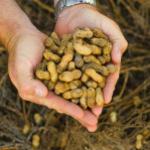
 High levels of fungus found in red yeast rice, nuts in Taiwan
High levels of fungus found in red yeast rice, nuts in Taiwan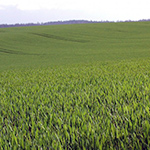
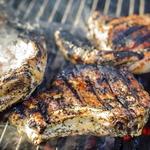


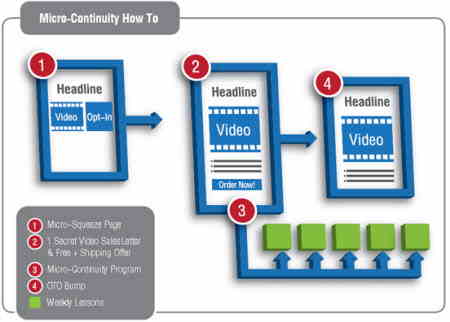

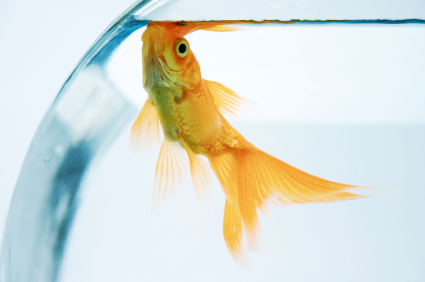
How do you add vitamin C to pasta? can you just empty the contents of a capsule
into the cooking water?
Hiya Don, You can buy Vitamin C in bulk – like sealed bags of it, which makes it easier to use 1/2 tsp or 1 tsp etc.
I’ve never done what Dr Hulda Clark recommends, but I might try it now that you’ve brought it back to my attention after all these years :)